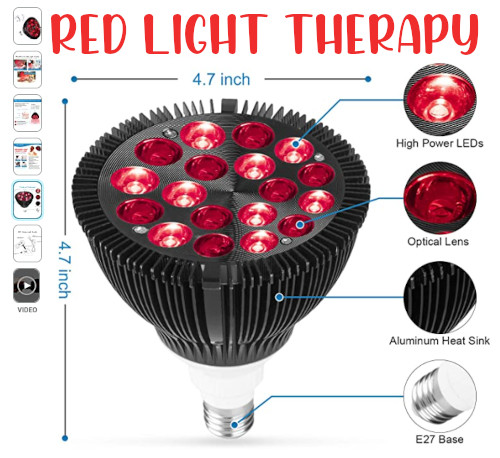 In recent years, red light therapy has gained attention as a non-invasive, low-risk treatment option for various health and beauty concerns. This therapy utilizes specific wavelengths of red and near-infrared light to penetrate the skin and stimulate a range of cellular processes. From promoting skin rejuvenation to reducing inflammation, red light therapy offers a multitude of potential benefits. In this article, we will delve into the world of red light therapy, exploring its advantages, disadvantages, and the tools required to harness its potential.
In recent years, red light therapy has gained attention as a non-invasive, low-risk treatment option for various health and beauty concerns. This therapy utilizes specific wavelengths of red and near-infrared light to penetrate the skin and stimulate a range of cellular processes. From promoting skin rejuvenation to reducing inflammation, red light therapy offers a multitude of potential benefits. In this article, we will delve into the world of red light therapy, exploring its advantages, disadvantages, and the tools required to harness its potential.
What is Red Light Therapy?
Red light therapy, also known as low-level light therapy (LLLT) or photobiomodulation, involves exposing the body to red or near-infrared light wavelengths. These wavelengths of light stimulate the mitochondria, the powerhouse of our cells, triggering various physiological responses.
Advantages of Red Light Therapy
Skin Rejuvenation: Red light therapy has shown promise in promoting collagen production and improving skin tone and texture. It can help reduce the appearance of fine lines, wrinkles, and age spots, while enhancing overall skin health and radiance.
Pain Relief and Inflammation Reduction: The anti-inflammatory properties of red light therapy make it an appealing option for managing pain associated with conditions like arthritis, joint pain, and muscle soreness. It can help reduce inflammation, swelling, and discomfort, potentially accelerating the healing process.
Enhanced Wound Healing: Red light therapy has been used to facilitate wound healing by promoting tissue repair and regrowth. It can stimulate the production of new blood vessels, increase circulation, and expedite the healing process for wounds, cuts, and ulcers.
Mood and Energy Boost: Exposure to red light has been shown to positively impact mood and energy levels. It can help alleviate symptoms of seasonal affective disorder (SAD) and improve overall well-being, especially during darker winter months.
Disadvantages and Precautions
Eye Protection: Direct exposure of the eyes to red or near-infrared light can be harmful and potentially damage the retina. It is crucial to wear protective goggles or cover the eyes during red light therapy sessions to ensure eye safety.
Heat Generation: Some red light therapy devices can generate heat during use. It is essential to follow the manufacturer’s instructions and avoid prolonged exposure to prevent burns or overheating of the skin.
Limited Scientific Evidence: While red light therapy shows promise in various applications, it is important to note that scientific research is still ongoing. Some claims related to its efficacy may lack substantial evidence, and individual responses may vary.
Tools for Red Light Therapy
Light Therapy Devices: Red light therapy can be administered using different devices, including light therapy panels, handheld devices, light therapy beds, and lamps. These devices emit specific wavelengths of light, typically red or near-infrared, to target specific areas or cover larger body areas.
LED Light Bulbs: Some individuals opt for red or near-infrared LED light bulbs to create their own red light therapy setup. These bulbs can be used in lamps or fixtures, allowing for localized or targeted treatment.
Light Therapy Masks: Light therapy masks are a popular option for facial treatments. These masks typically use a combination of red and near-infrared light to promote skin rejuvenation, reduce the appearance of wrinkles, and improve overall skin health.
Light Therapy Pads and Wraps: Light therapy pads and wraps offer convenience and versatility. These portable devices can be applied to different body areas, providing targeted therapy for pain relief, wound healing, or muscle recovery.
Red light therapy offers a range of potential benefits, including skin rejuvenation, pain relief, enhanced wound healing, and mood improvement. While precautions such as eye protection and careful heat management should be taken, red light therapy is generally considered safe and non-invasive. With various tools available, from light therapy devices to LED bulbs and masks, individuals can explore the potential benefits of red light therapy in the comfort of their own homes. However, it is important to consult with a healthcare professional before starting any new treatment, especially if you have specific medical conditions or concerns. Red light therapy continues to be an area of active research, and as scientific knowledge advances, we may uncover even more applications and benefits of this fascinating therapy.
Leave a Reply